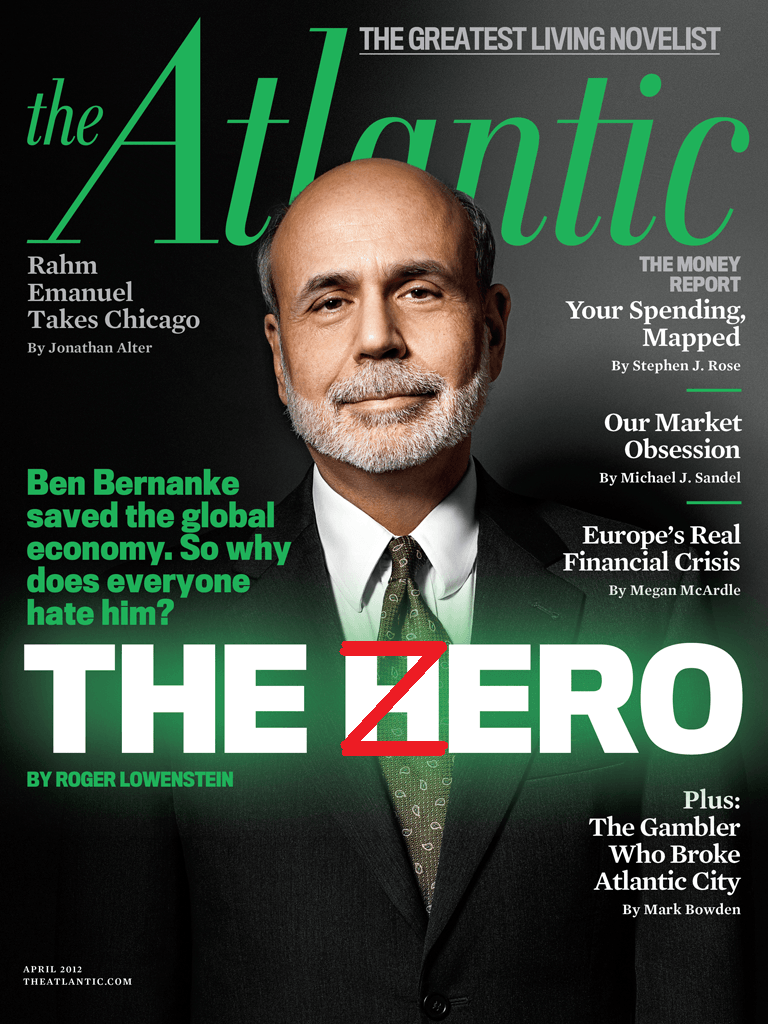In stunning fashion, the St. Louis Federal Reserve has released a rather big bombshell that many of the die-hard data watchers have been saying for nearly a decade: quantitative easing, essentially, is useless.
Former Federal Reserve Chair Ben Bernanke was heralded a hero by the press for saving the economy, after he embarked on a reckless half-science experiment, half-monetary policy that fell under quantitative easing.
However, a white paper released by the St. Louis Fed VP Stephen D. Williamson questions whether quantitative easing would ever increase inflation and economic growth, calling QE "not well developed."
From Williamson's paper:
"There is no work, to my knowledge, that establishes a link from QE to the ultimate goals of the Fed inflation and real economic activity. Indeed, casual evidence suggests that QE has been ineffective in increasing inflation. "
For well over a year, I have pointed out that quantitative easing not only has no effect on inflation (while longer-term ramifications of inflation are there), but every central bank that has blindly followed Bernanke's policy has seen no stable growth in inflation — or escape velocity for that matter.
Growth has been elusive. Since 1948, the U.S. has averaged 3.24 percent in GDP. However, during the so-called recovery, the U.S. has grown nearly a percentage point lower than historical trend after unprecedented monetary stimulus.
Currently, the U.S. GDP is tracking at 2.3 percent annualized, but today's FOMC minutes statement indicated concern that both inflation and growth targets will likely be cut.
Williamson continued:
"There is no way to determine whether asset prices move in response to a QE announcement simply because of a signalling effect hereby QE matters not because of the direct effects of the asset swaps, but because it provides information about future central bank actions with respect to the policy interest rate."
I think that can be determined. After announcing QE2 — since QE1 worked so, so well — Bernanke was asked if he would you contribute the stock market's rise since late August to QE2, and if not, why not?
His response:
"Well, first to be very clear — the purpose of the monetary policy easing was not to increase stock prices per se, the purpose is to strengthen the U.S. economy." Bernanke continued, "the way monetary policy always works is through interest rates and asset prices."
After, admitting that QE has led to higher asset prices and lowered stock market volatility. He even went on to say that the "Standard & Poor's 500 rose quite considerably," between QE1 and QE2 (insert smirking Bernanke).
There is no doubt that QE has sparked insidious speculation in equity and commodity prices, the latter which are collapsing on a globalized economic slowdown. Bernanke has said that by taking assets of the market, the Fed is essentially pushing investors into riskier, alternative investments.
Industrial metals and crude prices that were pushed higher on the narrative of global growth are now crashing to levels not seen since the financial crisis because the growth that was promised did not materialize.
The absence of any significant inflation on paper has caused investors to pile into the bond market. The strengthening dollar, which may be directly tied to the Fed's road map to potential monetary tightening, caused a crowded bond trade to become even more crowded.
Williamson even said the Fed's decision to undergo the process of forward guidance has done nothing more than to confuse market participants.
As I said in "Have Lessons Been Learned," following the Swiss National Bank snafu in January, in regards to forward guidance:
"Since the financial crisis, we have lived in a world of fantasy. Traders and investors believed that volatility was something of the past, and all that needed to be done was enjoy the parabolic nature of equities and other risk assets. The strings of the financial markets were pulled upon by world central banks, who told everyone it’ll all be OK.
The lack of volatility brought complacency that every little road bump was pre-planed by the central banks. All that was needed was a useless thing called forward guidance. However, this made traders lazy. Trades were now a sure thing, and everyone was making money. Unfortunately, the SNB snapped market participants back into reality. Nothing is a sure thing. Not your profits, and certainly not the EUR/CHF peg."
The paper also took blows at Bernanke's reasoning, which is deeply entrenched in academia:
"A Taylor-rule central banker may be convinced that lowering the central bank's nominal interest rate target will increase inflation. This can lead to a situation in which the central banker becomes permanently trapped in ZIRP.
With the nominal interest rate at zero for a long period of time, inflation is low, and the central banker reasons that maintaining ZIRP will eventually increase the inflation rate. But this never happens and, as long as the central banker adheres to a sufficiently aggressive Taylor rule, ZIRP will continue forever, and the central bank will fall short of its inflation target indefinitely. This idea seems to fit nicely with the recent observed behavior of the world ís central banks."
Bernanke may have thought out of the box but certainty not out of the classroom. I commend Williamson's paper for at least challenging the so-called saving grace that is quantitative easing (it's a lot more than CNBC would do). It is just sad that it took nearly $4 trillion in asset purchases and seven wasted years to figure out it was a wash when there were keen contrarians pointing this out far in advance but were only ridiculed.

